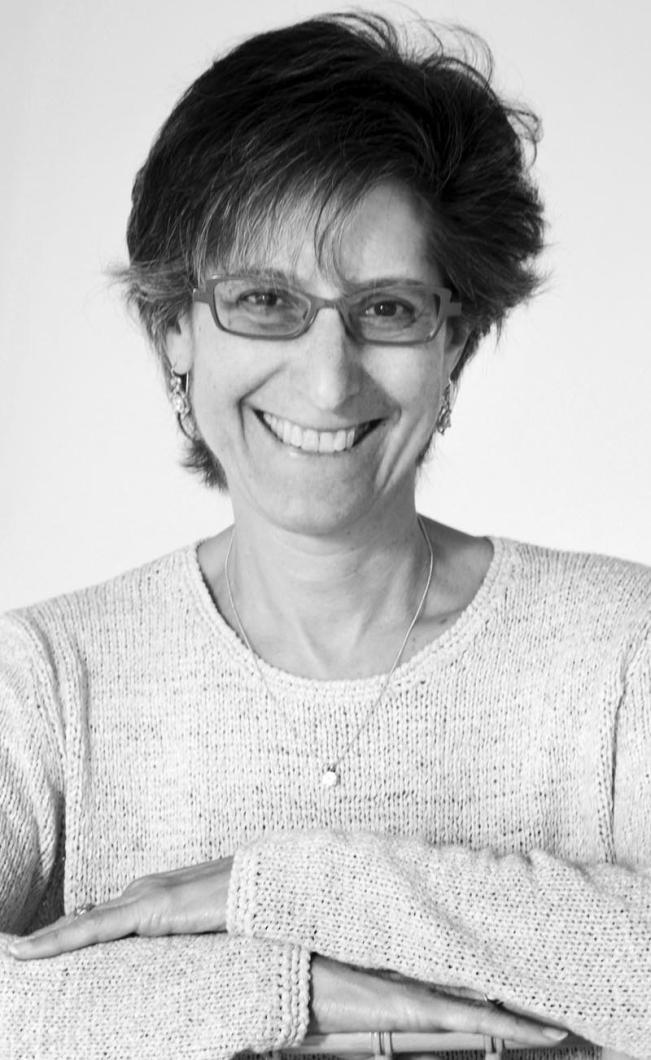Judith Hannan spent the first couple of decades of her working life floating from one job to another — a clerk, an office temp, a secretary, a fundraiser.
“I’m like a jellyfish. I just drift. I have drifted into everything I’ve ever done,” she said. “But once I became a mother, for the first time I felt so unbelievably engaged.”
During this time she discovered another passion of hers: writing. She wrote several pieces for Motherhood Magazine and other family publications, but admitted she was never good at keeping a journal.
This, along with the rest of her life, changed in late 2000, the day she took her eight-year old daughter, Nadia, for an X-ray of a lump Ms. Hannan had found in Nadia’s jaw. From the doctor’s mouth floated the heart-stopping word, “cancer.”
“On the way home I wonder how words such as chemo and oncology and CAT scan could have entered my life,” she wrote in her journal of that time. “These words do not belong to me. I don’t understand how I can be holding these films of my daughter as if I were carrying a file home from work, or why the trees are still growing right side up or why my body is still working when Nadia’s is in peril.”
“I have no moods of my own anymore,” reads another journal entry. “Like water that gets its shape from the vessel it is in, my moods are molded by Nadia. If she is happy and comfortable, so am I. If she is miserable, so am I. If she sleeps well, I can sleep well. Does she feel that burden?”
After Nadia’s recovery three years later, Ms. Hannan went looking for literature to read to help cope with what they had been through. While many books dealt with grief, she had trouble finding books of survival and moving forward.
“So I thought I would write the book that I wanted to read,” she said.
Her book, entitled Mother Exaggerated, was published last February. The book chronicles the initial nightmare, the struggle and eventual recovery of Nadia with honesty and accuracy from a mother’s point of view. Each chapter begins with an entry from the journal Ms. Hannan kept as she sat by Nadia’s side through chemotherapy, watched her little girl’s hair fall out and dealt with her emotional scars alongside Nadia’s physical scars.
Ms. Hannan will read from her memoir this Thursday, July 12, at Midnight Farm in Vineyard Haven beginning at 4 p.m.
With her journal as the basis, she first focused on the medical aspects of the journey, but soon felt that to an outsider it lacked personal context.
“I realized it wasn’t just a medical story. It was a story about being a mother, and how I changed as a mother, and what it means to be a mother . . . and not just a mother, but a wife, a friend and a daughter.”
In addition to describing the struggles and horrors of cancer vividly and with transparency, Ms. Hannan also explored the interrelationships between her family and herself: her lack of communication with her husband, her inability to forgive her late mother, and her weaknesses as a parent both to her other two children and to Nadia.
“I had to exaggerate myself — my role as a mother became much more than it had ever been before,” she said of the book’s title. “It also refers to the magnifying lens through which I would look at motherhood in the book. It probes every aspect of raising children.”
In the process, Ms. Hannan found herself floating once again into another direction of life — the medical world.
Just last week she held a presentation for a panel of doctors at the University of Medicine and Dentistry of New Jersey, reading from her book and answering questions.
The publisher of the book, CavanKerry Press, works in part with the Arnold P. Gold Foundation, which is devoted to making the practice of medicine become more humanized. It publishes one book a year in the literature of illness and presents it to the medical community.
Ms. Hannan wanted to help doctors, especially pediatricians, understand what patients endure inside and outside of doctors’ appointments.
“I thought it was important for them to see their patients and families in the moments when they are not there — like at home in the middle of the night, when your daughter is crying in pain all night.”
She also focused on the language and communication between doctors, patients and families.
During one presentation a doctor asked her, “Does it ever end?”
“I guess the answer to that is no,” Ms. Hannan said. “People need to know the difference between being cured and being healed. Healing kind of goes on forever. Whether you are cured or have finished treatment, it’s something that stays with you.”
Ms. Hannan and her husband, John, spend their summers in Chilmark. For 15 years Ms. Hannan has attended the Chilmark Writing Workshop and this summer will be no different.
During the offseason, she lives in Manhattan and teaches writing about personal experiences to single homeless mothers at the Children’s Museum.
“Homeless mothers are unseen. People want to criticize them and take their children away from them,” she said. “Through the writing that they do with us, they become visible. That’s the way I see writing.”
With this memoir Ms. Hannan feels that she, too, has become visible.
“What I love about memoirs is that it’s a way to draw a portrait of yourself that someone wouldn’t necessarily see,” she said. “There’s negative space around an object that defines it. I’m not going to say that this is negative space but . . . this outlines me. It gives me a form.”




Comments
Comment policy »